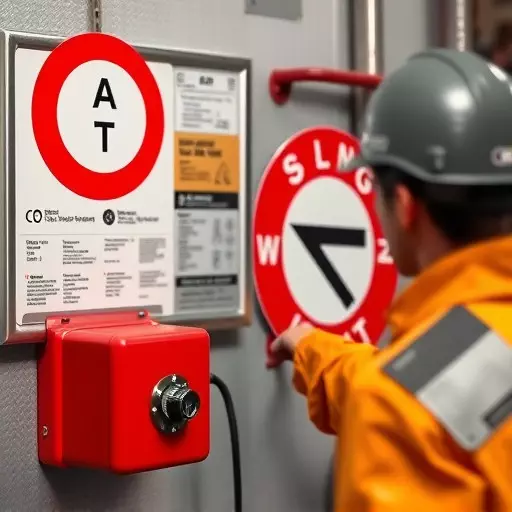Food processing plants must prioritize worker safety during equipment maintenance by adhering to OSHA's lockout/tagout (L/T) standards. Regular lockout tagout compliance training equips employees with knowledge of energy control procedures, enabling them to identify hazards, apply locks and tags, and maintain a safe environment. By following OSHA lockout tagout standards, plants promote safer workspaces, reduce risks, and enhance productivity while fostering a culture of safety among their workforce.
In the fast-paced world of food processing, ensuring worker safety during equipment maintenance is paramount. Lockout/tagout (L/T) procedures are critical to prevent accidents and injuries. This article explores the essential practices for implementing L/T compliance training in food processing plants, aligning with OSHA’s strict standards. We delve into energy control procedures, highlighting their significance in maintaining a safe environment. Regular training sessions foster a culture of awareness, empowering employees to uphold the highest safety protocols.
- Understanding Lockout/Tagout Procedures in Food Processing Plants
- OSHA's Role and Standards for Lockout/Tagout Compliance Training
- Implementing Effective Energy Control Procedures for Safety
- The Importance of Regular Training and Awareness in Food Safety
Understanding Lockout/Tagout Procedures in Food Processing Plants
In food processing plants, understanding and adhering to lockout/tagout (L/T) procedures is paramount for worker safety and OSHA compliance. L/T protocols involve de-energizing and securing equipment before performing maintenance or making adjustments, preventing accidents and injuries. The process typically includes tagging out the energy source with a distinctive warning tag, locking the control lever or switch in the off position, and removing access to the machine.
OSHA lockout tagout standards provide guidelines for developing and implementing these critical procedures. Regular compliance training, focusing on energy control procedures, is essential for ensuring workers know how to safely perform L/T practices. This training equips employees with the knowledge to identify potential hazards, apply appropriate locks and tags, and maintain a safe environment throughout equipment maintenance activities, thereby enhancing overall workplace safety in food processing plants.
OSHA's Role and Standards for Lockout/Tagout Compliance Training
The Occupational Safety and Health Administration (OSHA) plays a pivotal role in ensuring worker safety in food processing plants through its lockout/tagout standards. These regulations are designed to prevent accidents and injuries during equipment maintenance and repair, where energy control procedures are essential. OSHA’s lockout tagout compliance training guidelines equip employees with the knowledge and skills needed to implement these critical protocols safely and effectively.
The agency mandates comprehensive training programs that cover various aspects of energy control, including lockouts and tagouts, energy isolation, and de-energization procedures. This training ensures workers understand their responsibilities in preventing accidental energy release, which could lead to severe injuries or fatalities. By adhering to OSHA’s lockout tagout standards, food processing plants can create a safer working environment, reduce risks, and foster a culture of safety among their workforce.
Implementing Effective Energy Control Procedures for Safety
In food processing plants, ensuring worker safety during equipment maintenance is paramount. One proven method to achieve this is through effective lockout/tagout (L/T) procedures. Lockout tagout compliance training is essential for all employees to understand and follow OSHA lockout tagout standards. This involves de-energizing machinery before performing any maintenance or repair work, which significantly reduces the risk of accidents and injuries.
Energy control procedures training equips workers with the knowledge to identify potential hazards, properly implement L/T methods, and maintain a safe environment during downtime. By adhering to these rigorous standards, food processing plants can create a safer, more efficient workspace, thereby enhancing overall productivity while ensuring compliance with regulatory bodies like OSHA.
The Importance of Regular Training and Awareness in Food Safety
Regular training and awareness are paramount in food processing plants to maintain strict adherence to OSHA lockout/tagout standards and ensure optimal food safety practices. Lockout tagout compliance training empowers employees with the knowledge to identify potential hazards, understand energy control procedures, and implement effective safety measures. This proactive approach significantly reduces risks associated with equipment maintenance and operation, which are common points of concern in these highly mechanized environments.
Through continuous education, workers become vigilant about securing energy sources before performing tasks such as repairing or maintaining machinery. This includes learning to lock out and tag out equipment properly, ensuring no residual energy remains that could cause injury. Such training fosters a culture of safety where every employee takes responsibility for their well-being and that of their colleagues, ultimately contributing to a safer and more productive food processing facility.


